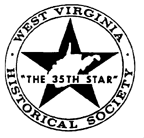
|
West
Virginia
Membership Information
|

|
West
Virginia
Membership Information
|
The church has had a profound effect on shaping and molding western cultures and the discovery of the western hemisphere afforded an opportunity for many seeking religious freedom to establish themselves in a new world where organized religions had no sway. The Disciples of Christ is one of those denominations whose creation grew out of several earlier groups who sought freedom to worship as they wished.
The Disciples of Christ is a Protestant denomination that developed from several religious movements in the United States during the early 1800s. Its full name is the Christian Church (Disciples of Christ.) Its founders include three men from a Presbyterian background - Thomas Campbell and his son, Alexander, in Pennsylvania and Barton W. Stone in Kentucky. The church took its present name in 1968 as part of a general reorganization.
Thomas Campbell was born in 1763 in County Down, Ireland. While in Ireland, Campbell served as a minister and founded an academy at Rich Hill. At age forty-five, he left his family, his church and his academy and migrated to America. On May 13, 1807, he stepped from the boat at Philadelphia into the meeting of the Associate Synod of North America, which represented all the Seceder Presbyterians in America.
In 1808, Thomas Campbell wrote his family, requesting that they join him in Pennsylvania. The family set sail for America in August, 1809 and arrived in New York in September. Thomas and his family were reunited in western Pennsylvania where he had settled after leaving Philadelphia.
Barton Stone was born in 1772 near Tobacco, Maryland and was educated at Davis Caldwell Academy in North Carolina. He enrolled in the Caldwell "Log College" with the intention of pursuing a career in law, but changed his mind and entered the Christian ministry.
After teaching in Georgia and preaching in North Carolina, he moved to Kentucky and requested ordination from the Transylvania Presbytery. After serving some time, as a Presbyterian, minister, charges were brought against him charging that he failed to abide by Presbyterian doctrine, resulting in his resignation from the group.
After his resignation, Stone, and a small group of sympathizers, began calling themselves "Christians." Similar in many respects to Stone's "Christians," were a small band of self-styled "Reformers" or "Disciples" led by former Presbyterians, Thomas and Alexander Campbell. No longer a part of the Presbyterian Church, Campbell formed the Christian Association of Washington (PA) in 1809. To summarize the group's thinking and to provide a basis for reform, Campbell wrote a treatise on Christian unity, "The Declaration and Address," called "the most influential document in Disciple's history."
In 1811, the Christian Association of Washington constituted itself into the Brush Run church and licensed Alexander Campbell to preach. On March 25, 1811, Campbell and his wife moved in with her family in their home on Buffalo Creek, near the present own of Bethany, West Virginia. Due to similarities in belief, the Brush Run Church affiliated itself with the Red Stone Baptist Association.
The Reformers and the Baptists held a tenuous relationship for fifteen years, from 1815 to 1830, but never enjoyed real harmony. During the same period, a small group of worshipers had been meeting rom time to time in the Baptist meeting house in Wellsburg, Virginia, under the influence of Alexander Campbell, but no church had been established. In 1823, Campbell asked the church at Brush Run for letters of dismissal for him and thirty others who desired to create a new church. Campbell and his followers shortly after founded the Disciples of Christ which offered its first service on August 31, 1823.
A congregation of the church was developed at Bethany in the spring of 1829. Like the Wellsburg congregation, this group grew from the settlement at Brush Run. As time went by, a community grew up around Alexander Campbell's home at Bethany where he proposed to create a college to train ministers of the faith. Campbell had replaced his father as leader of the fledgling denomination. In 1830 he began publishing a monthly magazine, The Millennial Harbinger, which he used to "inform the brethren and the churches."
Meanwhile, Barton Stone, and other like minded ministers, had been founding similar "Christian Churches" throughout Kentucky, Tennessee, Eastern and Northwestern Virginia. Variously called Church of Christ or Christian Church, these groups found common ground, with the Disciples of Christ and, in 1832, they formed an alliance. The churches had little formal litany and espoused a moderate theology emphasizing free choice. Such teaching appealed to many on the frontier where individualism was prized and the churches grew quickly until their numbers were nearly 200,000 by the end of the 1800s.
While the Church taught unity, a theological argument arose over the growing use of instrumental music in services and the creation of missionary societies. A group of dissidents created a new group in 1906, the Churches of Christ. The remaining groups worked as a loose amalgam under the title of the International Convention of Christian Churches until 1968 when the national framework was strengthened. The name, Christian Church (Disciples of Christ) was adopted. The Christian Church has remained in the forefront of social activism, has a global network of missions coordinated by the Christian Missionary Society and maintains two colleges, Bethany College in Bethany, West Virginia and Transylvania College in Lexington, Kentucky. The Church remains an important Protestant denomination with members numbering in the millions.
1. Goodpasture, B. The World Book Encyclopedia, Vol. III (Chicago: Field Enterprises Educational Corporation, 1974), 423.
2. Cramblet, Wilbur, The Christian Church in West Virginia (St. Louis: The Bethany Press, 1971), 15-16.
3. Ibid.
4. McCallister, Lester and Tucker, William, Journey in Faith (A History of the Christian Church) (St. Louis: The Bethany Press, 1975), 15-129.
5. Ibid.
6. Cramblet, The Christian Church in West Virginia.
7. Whitson, Mont, "Campbell's Post-Protestantism and Civil Religion," West Virginia History, XXXVII, No. 2, 109-121.
8. Microsoft, Encarta 96 Encyclopedia, CD ROM.